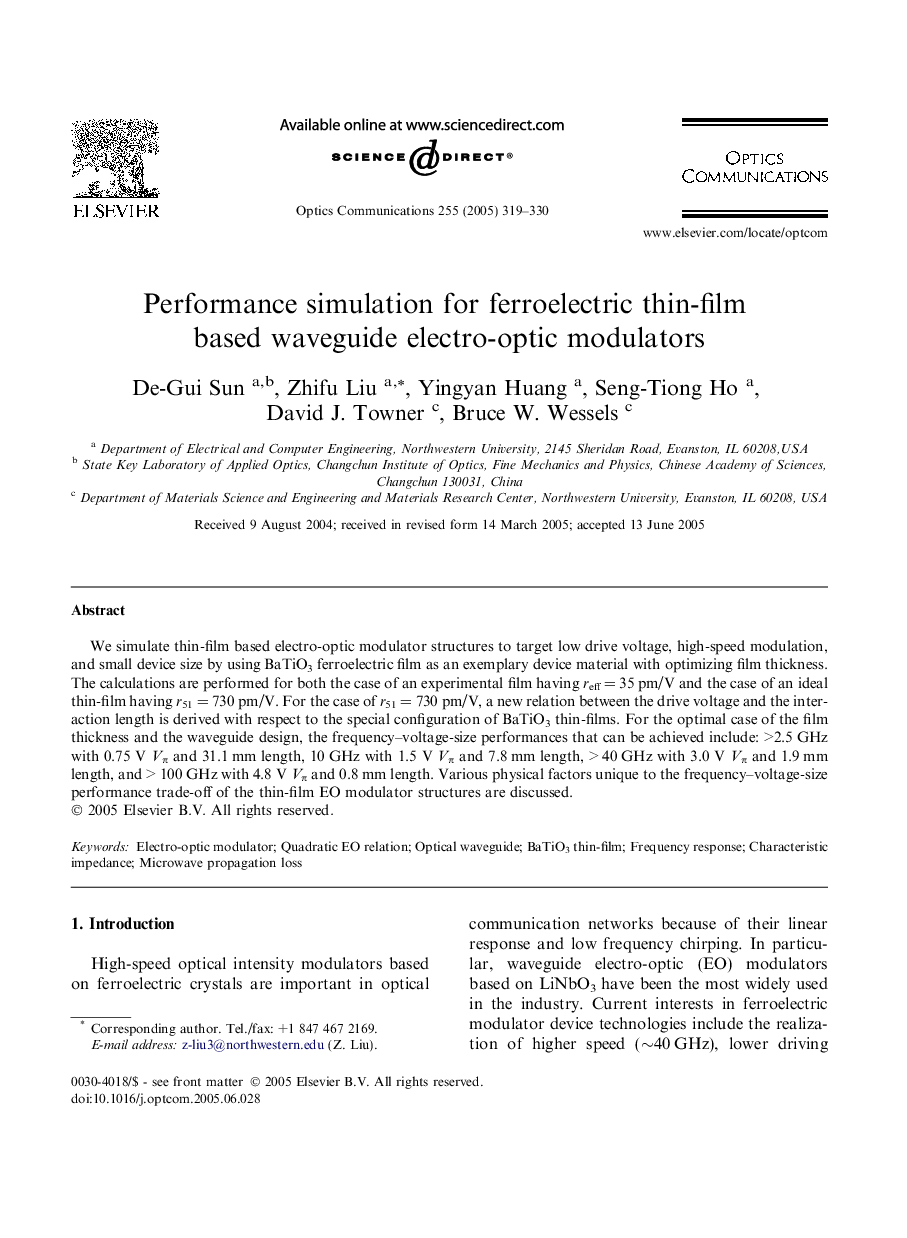| Article ID | Journal | Published Year | Pages | File Type |
|---|---|---|---|---|
| 9785567 | Optics Communications | 2005 | 12 Pages |
Abstract
We simulate thin-film based electro-optic modulator structures to target low drive voltage, high-speed modulation, and small device size by using BaTiO3 ferroelectric film as an exemplary device material with optimizing film thickness. The calculations are performed for both the case of an experimental film having reff = 35 pm/V and the case of an ideal thin-film having r51 = 730 pm/V. For the case of r51 = 730 pm/V, a new relation between the drive voltage and the interaction length is derived with respect to the special configuration of BaTiO3 thin-films. For the optimal case of the film thickness and the waveguide design, the frequency-voltage-size performances that can be achieved include: >2.5 GHz with 0.75 V VÏ and 31.1 mm length, 10 GHz with 1.5 V VÏ and 7.8 mm length, > 40 GHz with 3.0 V VÏ and 1.9 mm length, and > 100 GHz with 4.8 V VÏ and 0.8 mm length. Various physical factors unique to the frequency-voltage-size performance trade-off of the thin-film EO modulator structures are discussed.
Related Topics
Physical Sciences and Engineering
Materials Science
Electronic, Optical and Magnetic Materials
Authors
De-Gui Sun, Zhifu Liu, Yingyan Huang, Seng-Tiong Ho, David J. Towner, Bruce W. Wessels,
